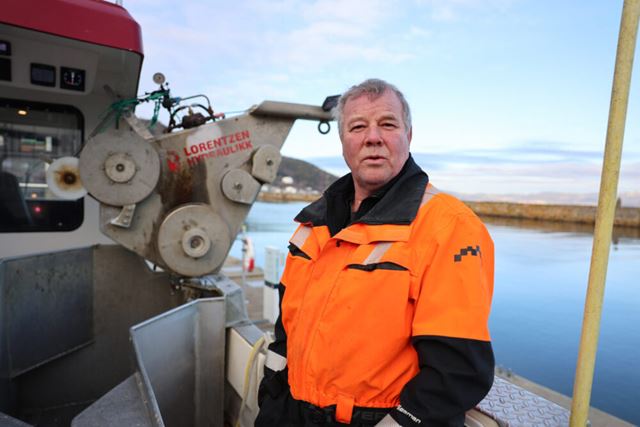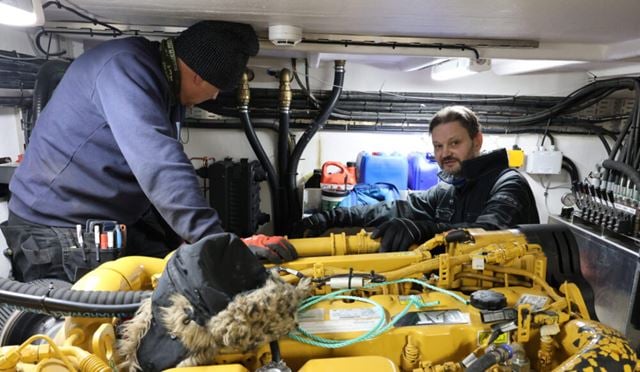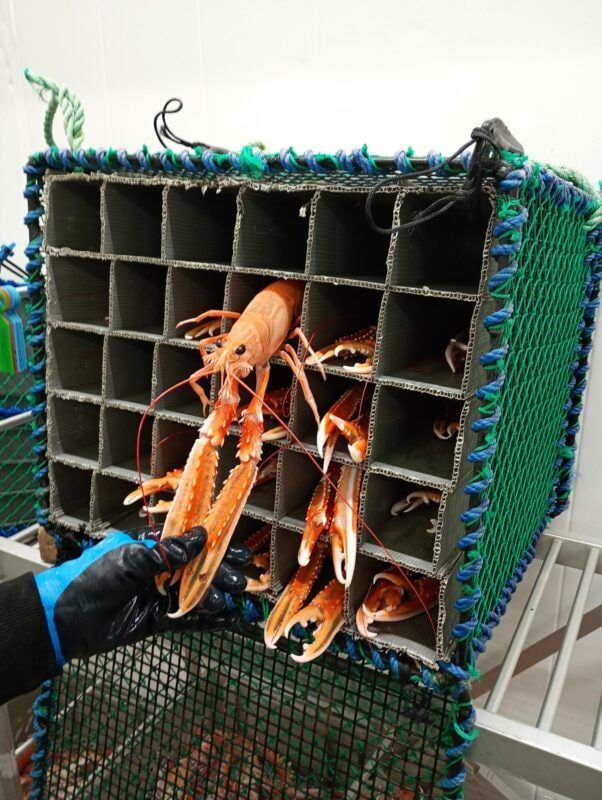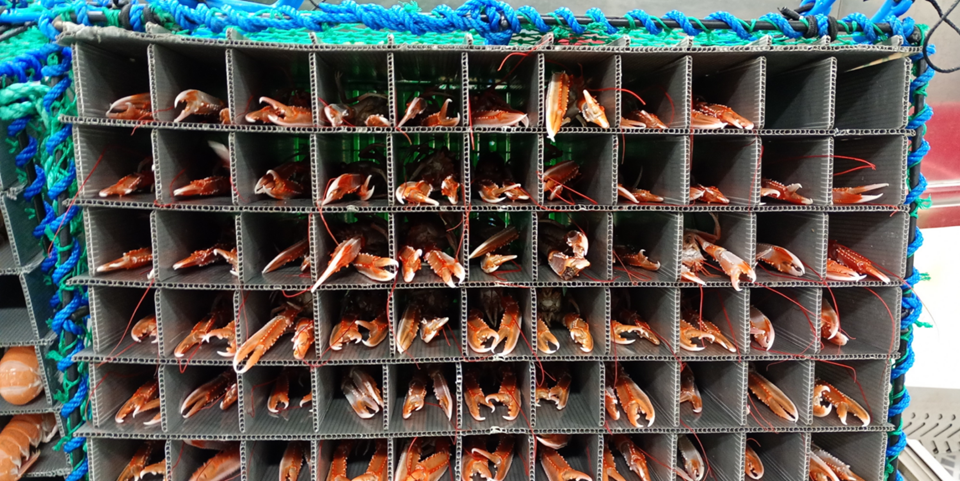Small fishing boats make up 80 percent of the 5600 fishing vessels in Norway. They deliver eleven percent of the country’s total catch of cod, in addition to a significant proportion of crab and other whitefish.
However, only five percent of the fishery products they deliver are refrigerated, despite temperature being one of the most important controllable factors for enhancing the quality and shelf life of the catch.
Researchers for the project Climate-friendly and energy-efficient cooling in small fishing vessels have now tested two prototypes of a simple, robust cooling system developed by HAV kjølesystemer and Cadio AS.
“We already know that cod has a six-day longer shelf life when stored at 1°C, compared to 5°C,” says Kristina Norne Widell, the project manager at SINTEF.
Happier langoustine
At Skansen in Trondheim, fishing skipper Ervik Ervik sits on board the boat Odd-Angel and points out where his langoustine pots are set out on the map. The distances are long between where the pots are and where the catch is to be delivered. Just outside the wheelhouse, two installers are heading down to the engine room, carrying something that Ervik is excited about.

Langoustine fisherman Ervik Ervik in the harbour in Trondheim. He is very happy with his new investment, a cooling system in the engine room of his boat. It provides a much improved quality to the fresh catch. Photo: Henriette Louise Krogness
With trained fingers, he rolls a cigarette and gives a nervous jump when he hears a thump. The reason Ervik’s stomach is all aflutter today is that he has invested in a small cooling system. But everything is going according to plan. The little thump happened in the narrow stairwell. And even though the engine room is far from roomy, the installers from HAV find a spot where the unit fits perfectly and won’t get in the way of anything else.
“With the new system, I can be at sea for several days before I have to deliver the catch. That means lower diesel costs for me and better conditions for the langoustines on board,” says Ervik as he looks at the refrigeration system that has found its natural place.
Five of us have squeezed in to enjoy the view in the surprisingly clean engine room, while Ervik explains why the investment is a good idea. The langoustines are placed in individual “hotel rooms” when he hauls them on board, which he now sets upright in large tanks filled with fresh seawater. The cooling system cools and circulates the water, creating much better on board conditions for the langoustines than they have without being chilled.
“The langoustines I deliver will be of better quality and will probably lead to less mortality as well,” says Ervik.
30 percent waste
Studies commissioned by the UN Food and Agriculture Organization (FAO) show that globally, at least 30 percent of fish and seafood becomes food waste. That figure can be reduced by improved refrigeration on board the fishing boats.
Even though all large fishing vessels in the pelagic fishing fleet have cooling systems on board, no “plug-and-play” systems are available on the market for the smaller boats.
Any investment requires individual vessel-specific design with the additional costs that this entails. But now a solution may be on the way. The refrigerated sea water (RSW) cooling system that is now being tested by Ervik can also be used by other small fishing vessels.
At the Fosen Skalldyr processing facility in the village of Vallersund, owner and general manager Ove Andreas Mandal receives langoustines from Ervik and other fishermen. He says that langoustines do not tolerate temperature fluctuations very well, and therefore sees the cooling systems on board the smaller boats as a positive development.

It looks cramped when HAV cooling systems installs the unit, but this engine room is spacious. Photo: Henriette Louise Krogness
“I think this is an excellent solution, especially during the summer months. Langoustines can withstand a lot, but they don’t tolerate temperature fluctuations well,” says Mandal.
The langoustines become stressed when they are brought up from 7°C in the ocean to 20°C on board the boat in the summer. They become lethargic, and mortality increases.
“In the summer we observe that it’s difficult to keep the langoustines alive when the temperature fluctuations become too extreme,” says Mandal.
Today, lethargic langoustines are often frozen and sold as frozen goods, which are less profitable than live langoustines. The question Mandal is now asking himself is whether he should pay the fisherman less for lethargic langoustine that will not survive in the tanks at the processing facility than for langoustines in good shape. However, he is not yet ready to require that all boats have refrigeration on board.

Hang in there. This rascal is doing well – at least until it ends up in the pot as a delicacy for discerning palates. Photo: Ove Andreas Mandal
Has to be able withstand rough conditions
The refrigeration system like the one Ervik has on his boat, was developed to be easy to use and has a robust design. It needs to be able to withstand tough working conditions. It has a cooling capacity of 8 kW and uses the natural refrigerant CO2.
Using natural refrigerants that have very low to no impact on the climate and environment when a leak occurs is key in order for the cooling system to be climate and environmentally friendly. Systems on fishing vessels tend to have a higher leak frequency than land-based systems due to the rougher conditions at sea.
It is gratifying to see that the demand for CO2 systems has increased. Roger Tellefsen from HAV cooling systems says that people specify the CO2 systems at fisheries fairs and not ones that use synthetic refrigerants.
Highlighting how the systems can be made to ensure the best possible energy-efficient operation is also needed. The project tests the cooling system in different working situations and notes the effect of active cooling on several fish species.
The project is being funded by the regional research fund, RFF Trøndelag.



